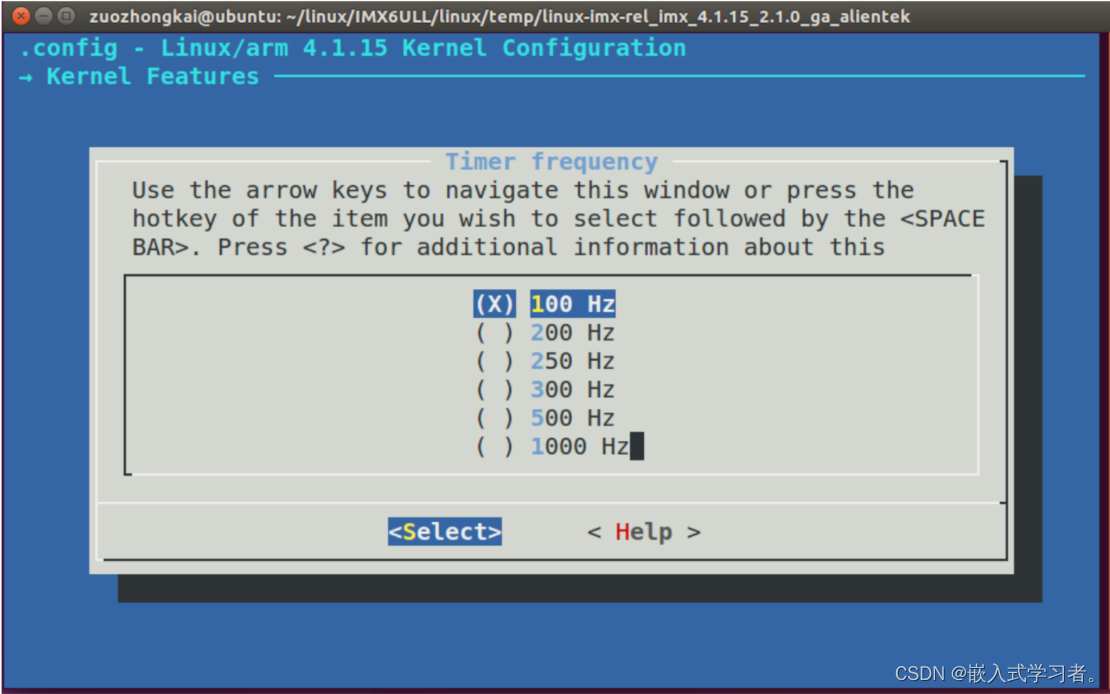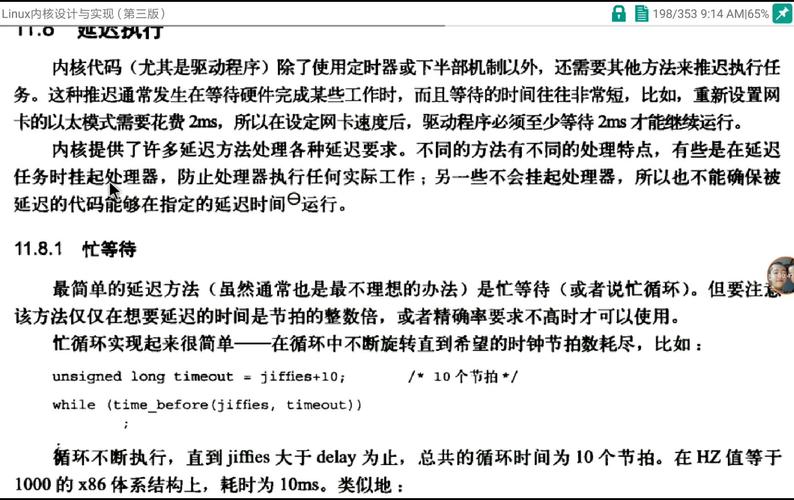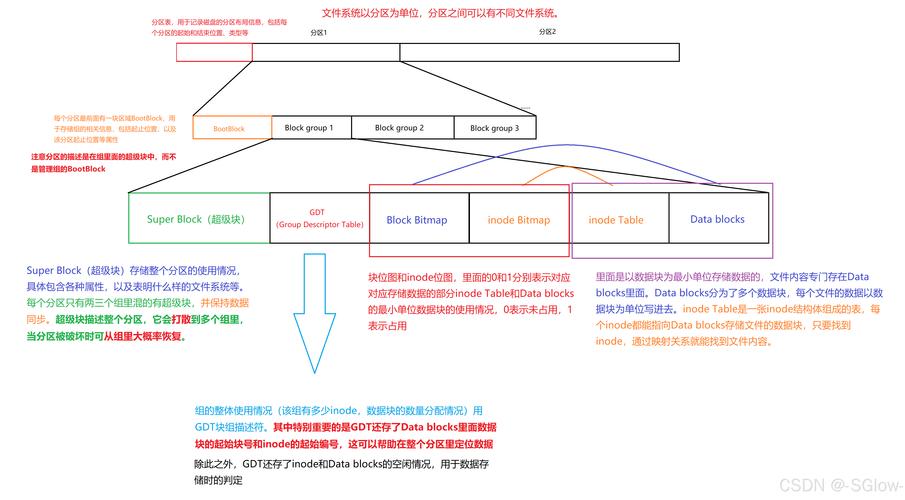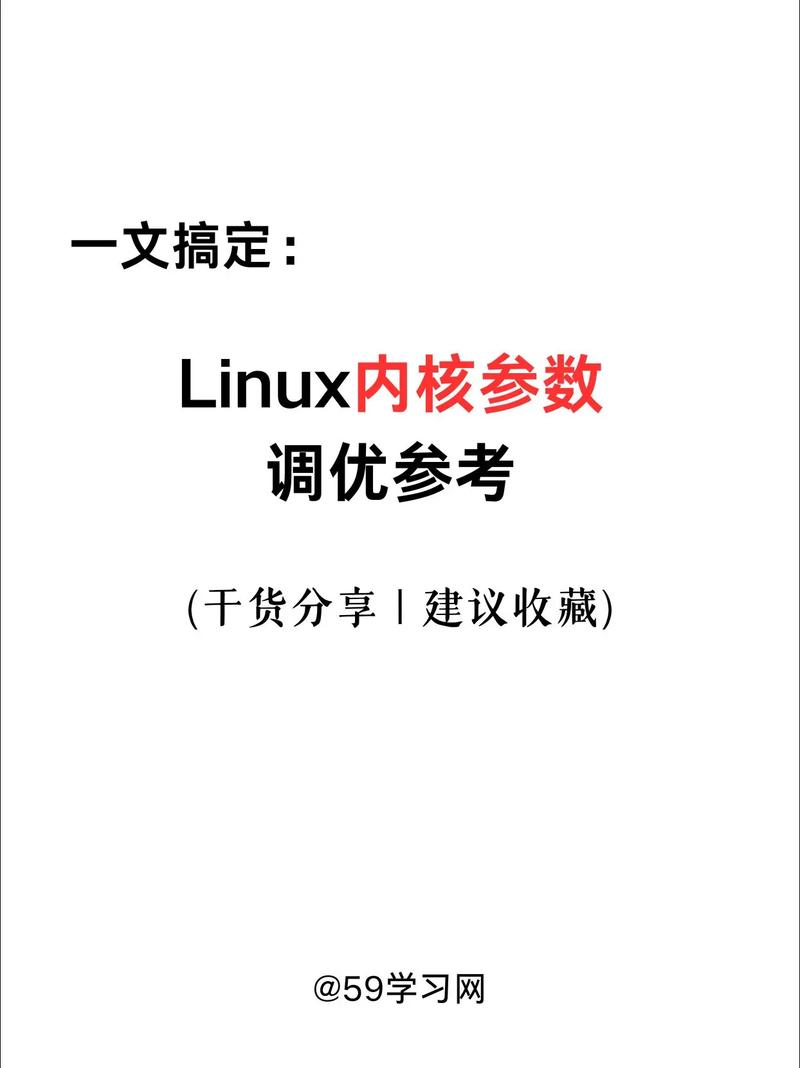1内核时间管理简介
我们在编译Linux内核的时侯可以通过图形化界面
设置系统节拍率,根据如下路径打开配置界面:
-> Kernel Features
-> Timer frequency (<choice> [=y])

高节拍率和低节拍率的异同点:
①、高节拍率会增强系统时间精度,假若采用100Hz的节拍率,时间精度就是10ms,采用
1000Hz的话时间精度就是1ms,精度增强了10倍。高精度时钟的用处有好多免费linux主机,对于这些对时
间要求严格的函数来说,就能以更高的精度运行,时间检测也愈发确切。
②、高节拍率会造成中断的形成愈加频繁,频繁的中断会减缓系统的负担,1000Hz和100Hz
的系统节拍率相比,系统要耗费10倍的“精力”去处理中断。中断服务函数占用处理器的时间
降低,然而现今的处理器性能都很强悍,所以采用1000Hz的系统节拍率并不会降低太大的负
载压力。
Linux内核使用全局变量jiffies来记录系统从启动以来的系统节拍数linux内核 定时器,系统启动的时侯会
将jiffies初始化为0linux系统安装教程,jiffies定义在文件include/linux/jiffies.h中,定义如下:
extern u64 __jiffy_data jiffies_64;
extern unsigned long volatile __jiffy_data jiffies;
Linux内核提供了几个jiffies和ms、us、ns之间的转换函数如右图:

2内核定时器简介
当超时时间到了之后设置的定时处理函数都会执行,和我们使用硬件定时器的套路一样,只是使用内核定时器不须要做一大堆的寄存器初始化工作。在使用内核定时器的时侯要注意一点,内核定时器并不是周期性运行的linux内核 定时器,超时之后才会手动关掉,因而假如想要实现周期性定时,这么就须要在定时处理函数中重新开启定时器。
使用内核定时器首先要先定义一个timer_list变量,定义好定时器之后还须要通过一系列的API函数来初始化此定时器,这种函数如下:
init_timer函数
init_timer函数负责初始化timer_list类型变量,当我们定义了一个timer_list变量之后一定
要先用init_timer初始化一下。init_timer函数原型如下:
void init_timer(struct timer_list *timer)
函数参数和返回值涵义如下:
timer:要初始化定时器。
返回值:没有返回值。
add_timer函数
add_timer函数用于向Linux内核注册定时器,使用add_timer函数向内核注册定时器之后,
定时器才会开始运行,函数原型如下:
void add_timer(struct timer_list *timer)
函数参数和返回值涵义如下:
timer:要注册的定时器。
返回值:没有返回值。
del_timer函数
del_timer函数用于删掉一个定时器,不管定时器有没有被激活,都可以使用此函数删掉。
在多处理器系统上,定时器可能会在其他的处理器上运行,因而在调用del_timer函数删掉定时
器之前要先等待其他处理器的定时处理器函数退出。del_timer函数原型如下:
int del_timer(struct timer_list * timer)
函数参数和返回值涵义如下:
timer:要删掉的定时器。
返回值:0,定时器还没被激活;1,定时器早已激活。
del_timer_sync函数
del_timer_sync函数是del_timer函数的同步版,会等待其他处理器使用完定时器再删掉,
del_timer_sync不能使用在中断上下文中。del_timer_sync函数原型如下所示:
int del_timer_sync(struct timer_list *timer)
函数参数和返回值涵义如下:
timer:要删掉的定时器。
返回值:0,定时器还没被激活;1,定时器早已激活。
mod_timer函数
mod_timer函数用于更改定时值,假如定时器还没有激活的话,mod_timer函数会激活定时
器!函数原型如下:
int mod_timer(struct timer_list *timer, unsigned long expires)
函数参数和返回值涵义如下:
timer:要更改超时时间(定时值)的定时器。
expires:更改后的超时时间。
返回值:0,调用mod_timer函数前定时器未被激活;1,调用mod_timer函数前定时器已
被激活。
定时器使用框架代码如下:
struct timer_list timer; /* 定义定时器 */
/* 定时器回调函数 */
void function(unsigned long arg)
{
/*
* 定时器处理代码
*/
/* 如果需要定时器周期性运行的话就使用 mod_timer
* 函数重新设置超时值并且启动定时器。
*/
mod_timer(&dev->timertest, jiffies + msecs_to_jiffies(2000));
}
/* 初始化函数 */
void init(void)
{

init_timer(&timer); /* 初始化定时器 */
timer.function = function; /* 设置定时处理函数 */
timer.expires=jffies + msecs_to_jiffies(2000);/* 超时时间 2 秒 */
timer.data = (unsigned long)&dev; /* 将设备结构体作为参数 */
add_timer(&timer); /* 启动定时器 */
}
/* 退出函数 */
void exit(void)
{
del_timer(&timer); /* 删除定时器 */
/* 或者使用 */
del_timer_sync(&timer);
}
Linux内核短延时函数

#include
#include
#include
#include
#include
#include
#include
#include
#include
#include
#include
#include
#include
#include
#include
#include
#include
#include
#define TIMER_CNT 1 /* 设备号个数 */
#define TIMER_NAME "timer" /* 名字 */
#define CLOSE_CMD (_IO(0XEF, 0x1)) /* 关闭定时器 */
#define OPEN_CMD (_IO(0XEF, 0x2)) /* 打开定时器 */
#define SETPERIOD_CMD (_IO(0XEF, 0x3)) /* 设置定时器周期命令 */
#define LEDON 1 /* 开灯 */
#define LEDOFF 0 /* 关灯 */
/* timer设备结构体 */
struct timer_dev{
dev_t devid; /* 设备号 */
struct cdev cdev; /* cdev */
struct class *class; /* 类 */
struct device *device; /* 设备 */
int major; /* 主设备号 */
int minor; /* 次设备号 */
struct device_node *nd; /* 设备节点 */
int led_gpio; /* key所使用的GPIO编号 */
int timeperiod; /* 定时周期,单位为ms */
struct timer_list timer;/* 定义一个定时器*/
spinlock_t lock; /* 定义自旋锁 */
};
struct timer_dev timerdev; /* timer设备 */
/*
* @description : 初始化LED灯IO,open函数打开驱动的时候
* 初始化LED灯所使用的GPIO引脚。
* @param : 无
* @return : 无
*/

static int led_init(void)
{
int ret = 0;
timerdev.nd = of_find_node_by_path("/gpioled");
if (timerdev.nd== NULL) {
return -EINVAL;
}
timerdev.led_gpio = of_get_named_gpio(timerdev.nd ,"led-gpio", 0);
if (timerdev.led_gpio < 0) {
printk("can't get ledrn");
return -EINVAL;
}
/* 初始化led所使用的IO */
gpio_request(timerdev.led_gpio, "led"); /* 请求IO */
ret = gpio_direction_output(timerdev.led_gpio, 1);
if(ret < 0) {
printk("can't set gpio!rn");
}
return 0;
}
/*
* @description : 打开设备
* @param - inode : 传递给驱动的inode
* @param - filp : 设备文件,file结构体有个叫做private_data的成员变量
* 一般在open的时候将private_data指向设备结构体。
* @return : 0 成功;其他 失败
*/
static int timer_open(struct inode *inode, struct file *filp)
{
int ret = 0;
filp->private_data = &timerdev; /* 设置私有数据 */
timerdev.timeperiod = 1000; /* 默认周期为1s */
ret = led_init(); /* 初始化LED IO */
if (ret < 0) {
return ret;
}
return 0;
}
/*
* @description : ioctl函数,
* @param - filp : 要打开的设备文件(文件描述符)
* @param - cmd : 应用程序发送过来的命令
* @param - arg : 参数
* @return : 0 成功;其他 失败
*/
static long timer_unlocked_ioctl(struct file *filp, unsigned int cmd, unsigned long arg)
{
struct timer_dev *dev = (struct timer_dev *)filp->private_data;
int timerperiod;
unsigned long flags;
switch (cmd) {
case CLOSE_CMD: /* 关闭定时器 */
del_timer_sync(&dev->timer);
break;
case OPEN_CMD: /* 打开定时器 */
spin_lock_irqsave(&dev->lock, flags);
timerperiod = dev->timeperiod;
spin_unlock_irqrestore(&dev->lock, flags);
mod_timer(&dev->timer, jiffies + msecs_to_jiffies(timerperiod));
break;
case SETPERIOD_CMD: /* 设置定时器周期 */
spin_lock_irqsave(&dev->lock, flags)
dev->timeperiod = arg;
spin_unlock_irqrestore(&dev->lock, flags);
mod_timer(&dev->timer, jiffies + msecs_to_jiffies(arg));
break;
default:
break;
}
return 0;
}
/* 设备操作函数 */
static struct file_operations timer_fops = {
.owner = THIS_MODULE,
.open = timer_open,
.unlocked_ioctl = timer_unlocked_ioctl,
};
/* 定时器回调函数 */
void timer_function(unsigned long arg)
{
struct timer_dev *dev = (struct timer_dev *)arg;
static int sta = 1;
int timerperiod;
unsigned long flags;
sta = !sta; /* 每次都取反,实现LED灯反转 */
gpio_set_value(dev->led_gpio, sta);
/* 重启定时器 */
spin_lock_irqsave(&dev->lock, flags);
timerperiod = dev->timeperiod;
spin_unlock_irqrestore(&dev->lock, flags);
mod_timer(&dev->timer, jiffies + msecs_to_jiffies(dev->timeperiod));
}
/*
* @description : 驱动入口函数
* @param : 无
* @return : 无
*/
static int __init timer_init(void)
{
/* 初始化自旋锁 */
spin_lock_init(&timerdev.lock);
/* 注册字符设备驱动 */
/* 1、创建设备号 */

if (timerdev.major) { /* 定义了设备号 */
timerdev.devid = MKDEV(timerdev.major, 0);
register_chrdev_region(timerdev.devid, TIMER_CNT, TIMER_NAME);
} else { /* 没有定义设备号 */
alloc_chrdev_region(&timerdev.devid, 0, TIMER_CNT, TIMER_NAME); /* 申请设备号 */
timerdev.major = MAJOR(timerdev.devid); /* 获取分配号的主设备号 */
timerdev.minor = MINOR(timerdev.devid); /* 获取分配号的次设备号 */
}
/* 2、初始化cdev */
timerdev.cdev.owner = THIS_MODULE;
cdev_init(&timerdev.cdev, &timer_fops);
/* 3、添加一个cdev */
cdev_add(&timerdev.cdev, timerdev.devid, TIMER_CNT);
/* 4、创建类 */
timerdev.class = class_create(THIS_MODULE, TIMER_NAME);
if (IS_ERR(timerdev.class)) {
return PTR_ERR(timerdev.class);
}
/* 5、创建设备 */
timerdev.device = device_create(timerdev.class, NULL, timerdev.devid, NULL, TIMER_NAME);
if (IS_ERR(timerdev.device)) {
return PTR_ERR(timerdev.device);
}
/* 6、初始化timer,设置定时器处理函数,还未设置周期,所有不会激活定时器 */
init_timer(&timerdev.timer);
timerdev.timer.function = timer_function;
timerdev.timer.data = (unsigned long)&timerdev; //指定timer_function的入口参数为timerdev
return 0;
}
/*
* @description : 驱动出口函数
* @param : 无
* @return : 无
*/
static void __exit timer_exit(void)
{
gpio_set_value(timerdev.led_gpio, 1); /* 卸载驱动的时候关闭LED */
del_timer_sync(&timerdev.timer); /* 删除timer */
#if 0
del_timer(&timerdev.tiemr);
#endif
/* 注销字符设备驱动 */
gpio_free(timerdev.led_gpio);
cdev_del(&timerdev.cdev);/* 删除cdev */
unregister_chrdev_region(timerdev.devid, TIMER_CNT); /* 注销设备号 */
device_destroy(timerdev.class, timerdev.devid);
class_destroy(timerdev.class);
}
module_init(timer_init);
module_exit(timer_exit);
MODULE_LICENSE("GPL");
MODULE_AUTHOR("hsd");
app
#include "stdio.h"
#include "unistd.h"
#include "sys/types.h"
#include "sys/stat.h"
#include "fcntl.h"
#include "stdlib.h"
#include "string.h"
#include "linux/ioctl.h"
/* 命令值 */
#define CLOSE_CMD (_IO(0XEF, 0x1)) /* 关闭定时器 */
#define OPEN_CMD (_IO(0XEF, 0x2)) /* 打开定时器 */
#define SETPERIOD_CMD (_IO(0XEF, 0x3)) /* 设置定时器周期命令 */
/*
* @description : main主程序
* @param - argc : argv数组元素个数
* @param - argv : 具体参数
* @return : 0 成功;其他 失败
*/
int main(int argc, char *argv[])
{
int fd, ret;
char *filename;
unsigned int cmd;
unsigned int arg;
unsigned char str[100];
if (argc != 2) {
printf("Error Usage!rn");
return -1;
}
filename = argv[1];
fd = open(filename, O_RDWR);
if (fd < 0) {
printf("Can't open file %srn", filename);
return -1;
}
while (1) {
printf("Input CMD:");
ret = scanf("%d", &cmd);
if (ret != 1) { /* 参数输入错误 */
gets(str); /* 防止卡死 */
}
if(cmd == 1) /* 关闭LED灯 */
cmd = CLOSE_CMD;
else if(cmd == 2) /* 打开LED灯 */
cmd = OPEN_CMD;
else if(cmd == 3) {
cmd = SETPERIOD_CMD; /* 设置周期值 */
printf("Input Timer Period:");
ret = scanf("%d", &arg);
if (ret != 1) { /* 参数输入错误 */
gets(str); /* 防止卡死 */
}
}
ioctl(fd, cmd, arg); /* 控制定时器的打开和关闭 */
}
close(fd);
}
